South African Artist Lwando Dlamini’s Energetic New Paintings Capture the Experience Trauma and Triumph
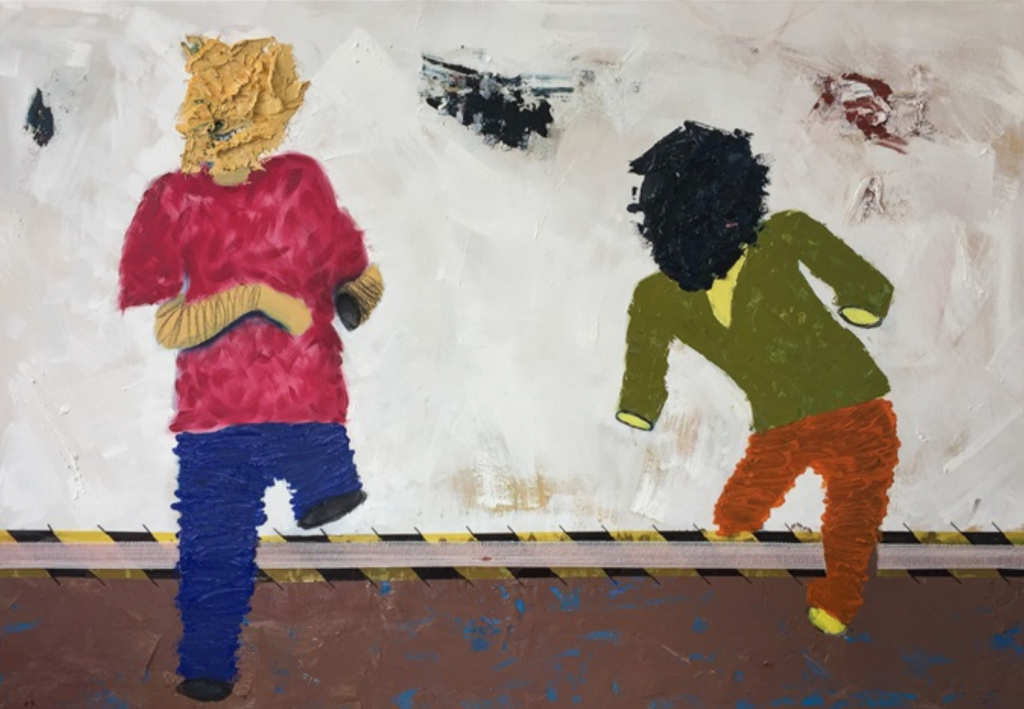

Artnet Gallery Network

Violence and jubilance both figure prominently in “Triumph,” South African artist Lwando Dlamini’s debut solo show at Cape Town’s Ebony/Curated gallery. Faceless figures fill the canvases—often they are missing arms, legs, hands, or feet and garish hues of blood-red hues and flesh-like pinks are applied in thick impasto—conjuring imagery of bodily wounds.
At the same time, the mood is not one of distress necessarily. These anonymous figures seem unexpectedly joyful; they are dressed up, dancing, and embracing, against bright monochromatic backgrounds. “My colors are getting brighter,” Dlamini said of his recent works. “I’m out of that dark period in my head.”
For the artist, these images are at once intensely personal and universal. Dlamini grew up in Philippi, a notoriously dangerous township in Cape Town. As an introverted young boy who kept to himself, he was brutally bullied and routinely beaten while growing up. At 10 years old, he suffered a coma that left him temporarily paralyzed and he had to relearn to everything from walking to eating. Then, at 20 years old, he was assaulted by South African police while walking home from a party and was left for dead. He somehow wound up at the hospital, listed as a John Doe.
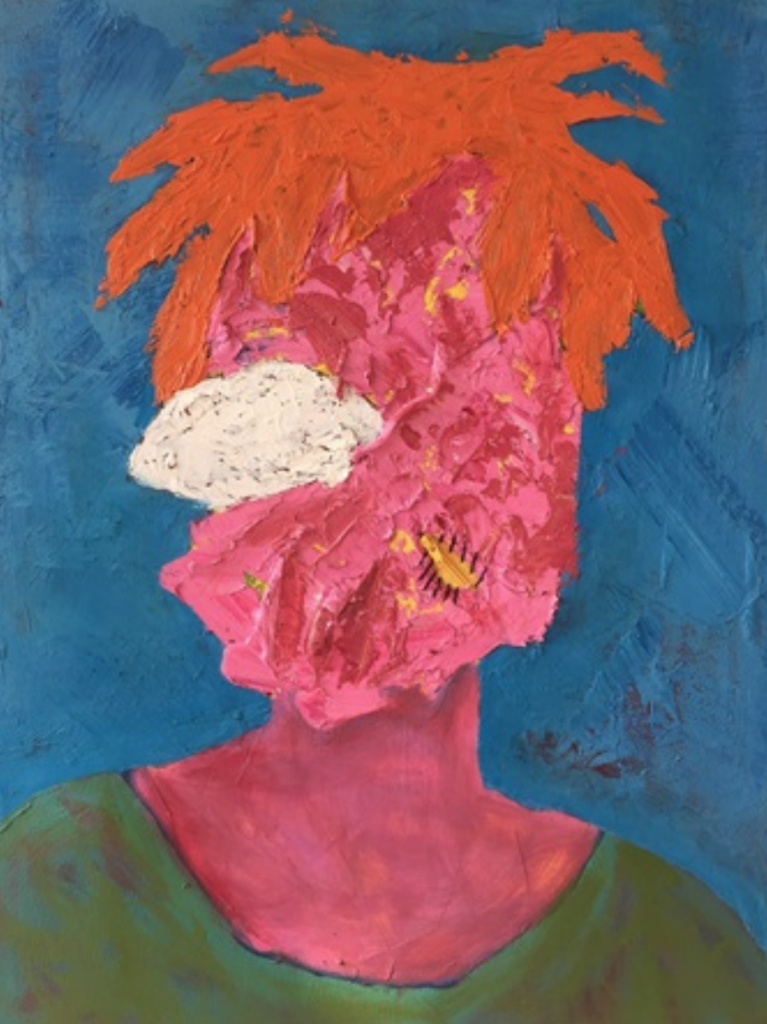
Lwando Dlamini, Self Portrait II (2020). Courtesy of Ebony/Curated.
Those experiences of physical trauma, Dlamini has said, led him to reflect on the fragility of the human body, but also—even more crucially—on the human spirit’s resilience. An avid reader, Dlamini cites everything from the writings of South African novelist Zakes Mda and Nigerian author Chimamanda Ngozi Adichie to the works of Canadian clinical psychologist Jordan Peterson as influences. South African artists David Koloane and Kagiso Patrick “Pat” Mautloa have also served as inspiration.
In her catalogue essay “Triumph in the Time of Black Ontological Terror,” writer Amogelang Maledu positions Dlamini’s work within both this period of global reckoning with police brutality as South Africa struggles with gender-based hate crimes and the displacement of Black people within Cape Town itself. While the figures are joyful, Maledu notes that they are not naive and, rather than denying their trauma, they each point “at their ailment through their occasional incisions, threaded zippers-cum-stitches on the canvas or spliced chevron and reflective tape stapled onto them.”
These are deliberate figures, injected by Dlamini with an internal determinism, or, as Dlamini remarked: “They’re finding their path back to their identity, maybe. They could be anyone, but they’re also someone”
See more images from “Lwando Dlamini: Triumph” below.
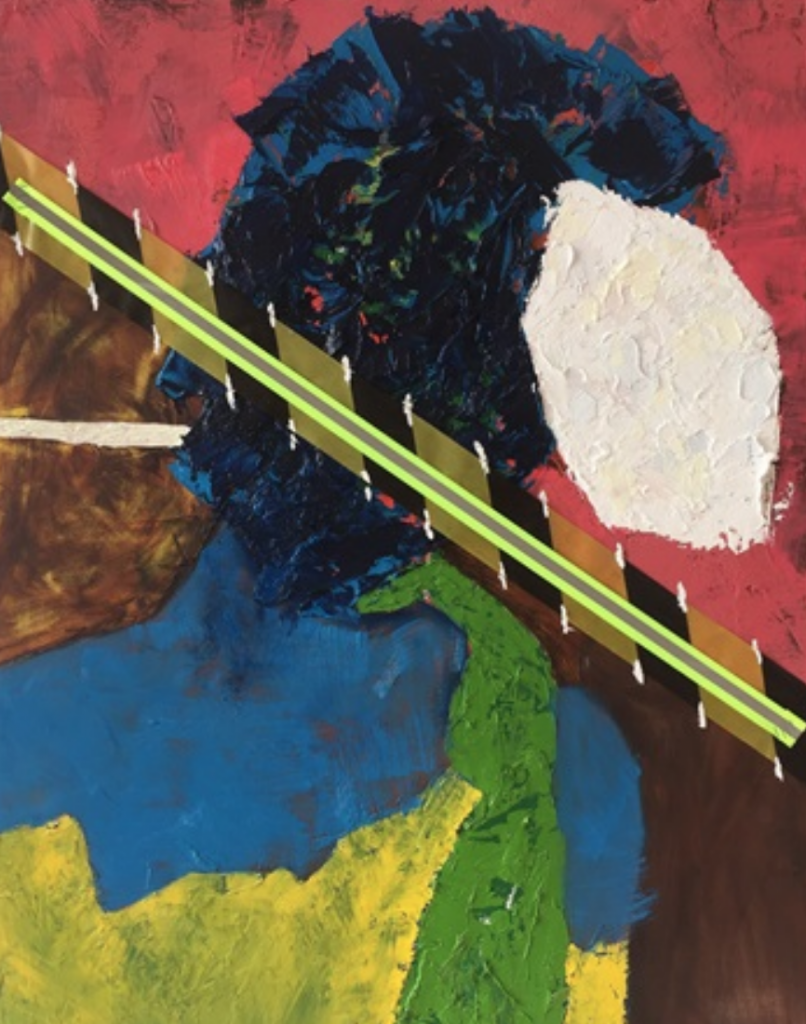
Lwando Dlamini, Better Tomorrow (2020). Courtesy of Ebony/Curated.
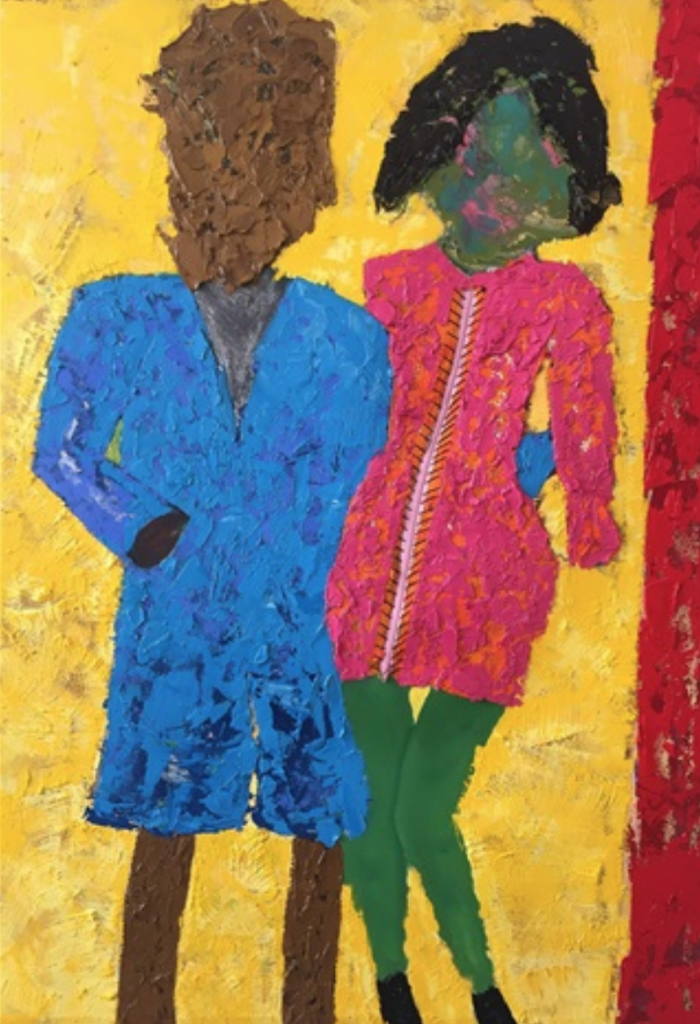
Lwando Dlamini, Violent Dancers II (2020). Courtesy of Ebony/Curated.
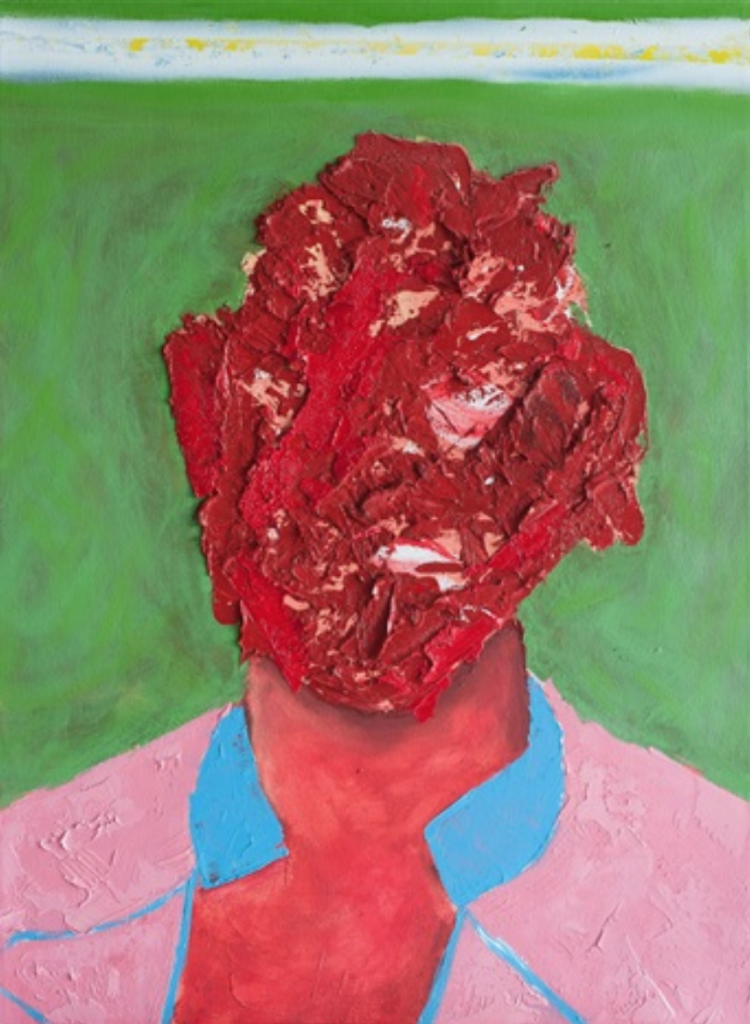
Lwando Dlamini, Amo (2020). Courtesy of Ebony/Curated.

Installation view “Lwando Dlamini: Triumph,” 2020. Courtesy of Ebony/Curated.
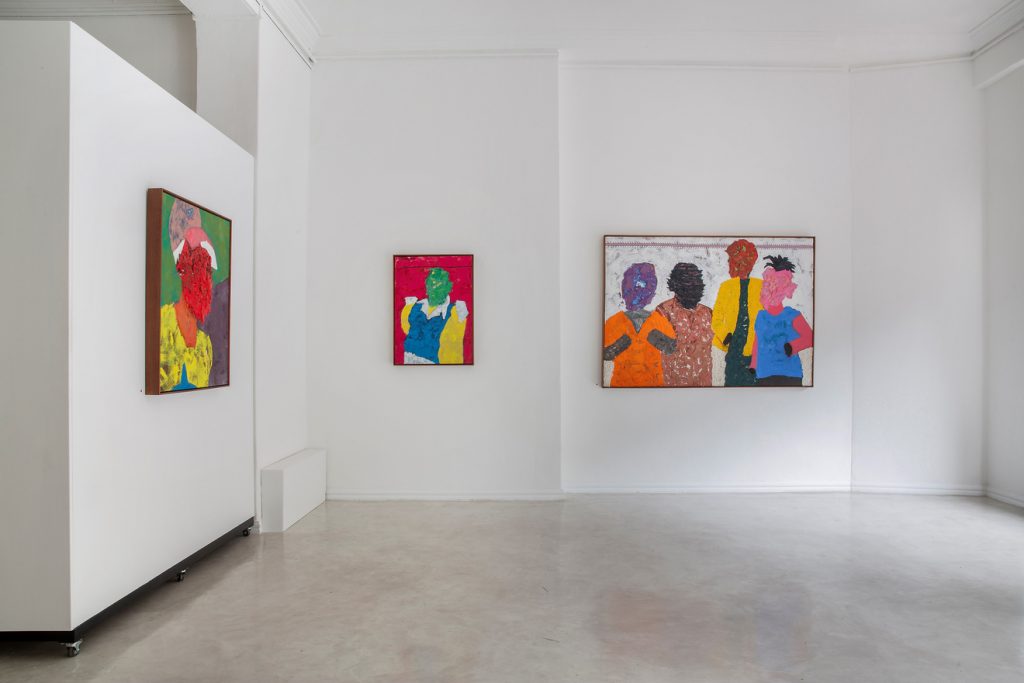
Installation view “Lwando Dlamini: Triumph,” 2020. Courtesy of Ebony/Curated.
“Lwando Dlamini: Triumph” is on view at Ebony/Curated, Capetown, through August 31.